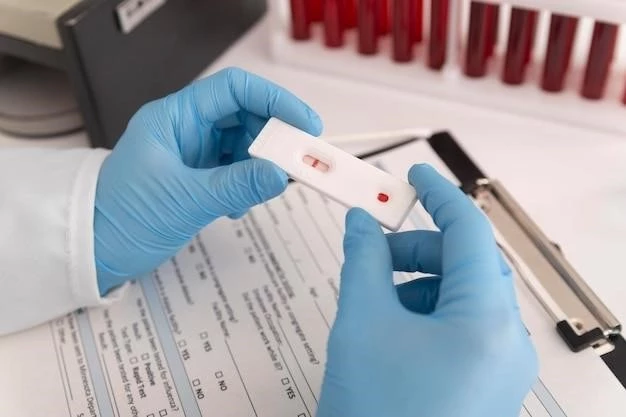Introduction to X-linked Agammaglobulinemia
X-linked agammaglobulinemia is a primary immunodeficiency disorder resulting from mutations in a gene on the X chromosome. It leads to deficiencies in humoral immunity, specifically related to B-cell development and maturation.
Definition and Genetic Basis
X-linked agammaglobulinemia is a primary immunodeficiency disorder caused by mutations in a gene on the X chromosome. This gene encodes Bruton tyrosine kinase, essential for B-cell development and maturation, leading to deficiencies in humoral immunity.
Symptoms of X-linked Agammaglobulinemia
Common symptoms of X-linked agammaglobulinemia include recurrent infections, particularly with encapsulated bacteria, viral infections of the central nervous system, and an increased risk of certain cancers. Early recognition and treatment are essential.
Recurrent Infections
X-linked agammaglobulinemia presents with recurrent infections, especially with encapsulated bacteria, viral infections affecting the central nervous system, and an increased susceptibility to certain cancers. Early diagnosis and treatment are crucial to manage these recurrent infections effectively.
Specific Infection Sites
Specific infection sites in individuals with X-linked agammaglobulinemia include recurrent bacterial infections in the ears, throat, sinuses, lungs, and other organs. It is essential to monitor and treat these infections promptly to prevent complications.
Causes of X-linked Agammaglobulinemia
X-linked agammaglobulinemia is caused by a faulty gene on the X chromosome, leading to absence or low levels of B cells and immunoglobulins essential for immunity.
Faulty Gene on the X Chromosome
X-linked agammaglobulinemia is caused by a defect in a gene on the X chromosome. This genetic abnormality leads to the absence or low levels of certain immune cells, impacting the body’s ability to fight infections effectively.
Diagnosis of X-linked Agammaglobulinemia
Diagnosing X-linked agammaglobulinemia involves genetic testing to identify the faulty gene on the X chromosome, along with assessing immunoglobulin levels and B-cell function through laboratory findings.
Laboratory Findings
Laboratory findings for diagnosing X-linked agammaglobulinemia include genetic testing to identify mutations in the gene on the X chromosome, along with assessing immunoglobulin levels and B-cell function. Early and accurate diagnosis is crucial for appropriate management and treatment outcomes.
Treatment Options for X-linked Agammaglobulinemia
Treatment for X-linked agammaglobulinemia often includes immune globulin replacement therapy and antibiotics to manage recurrent infections effectively.
Immune Globulin Replacement Therapy
Immune globulin replacement therapy is a key treatment for X-linked agammaglobulinemia, aiming to restore antibody levels and improve immune function. Regular infusions are necessary to prevent infections and improve quality of life;
Antibiotics
Antibiotics are commonly used in the treatment of X-linked agammaglobulinemia to manage and prevent recurrent infections effectively. They play a crucial role in controlling and minimizing the impact of bacterial infections on individuals with this condition.
Complications of X-linked Agammaglobulinemia
Complications of X-linked agammaglobulinemia may include chronic lung disease as a consequence of recurrent pulmonary infections. Early intervention and close monitoring can help manage these complications effectively.

Impact of X-linked Agammaglobulinemia on Quality of Life
Individuals with X-linked agammaglobulinemia may experience a significant impact on their quality of life due to recurrent infections and the need for ongoing treatment. Implementing strategies to prevent infections can help improve overall well-being.
Preventing Infections
Preventing infections is crucial for individuals with X-linked agammaglobulinemia to improve their quality of life. Measures such as practicing good hygiene, avoiding contact with sick individuals, and receiving timely vaccinations can help reduce the risk of infections.

Management Strategies for X-linked Agammaglobulinemia
Lifelong immunoglobulin replacement therapy is essential for managing X-linked agammaglobulinemia effectively and reducing the risk of infections.
Lifelong Immunoglobulin Replacement Therapy
Lifelong immunoglobulin replacement therapy is essential for individuals with X-linked agammaglobulinemia to maintain proper immune function and prevent recurrent infections. Regular infusions are necessary to manage the condition effectively.
Recent Advances in Understanding X-linked Agammaglobulinemia
Research studies focusing on regional differences in the presentation and complications of X-linked agammaglobulinemia have provided valuable insights into understanding the disease better.
Research Studies on Regional Differences
Research studies on regional differences in the presentation and complications of X-linked agammaglobulinemia have provided valuable insights into understanding the disease better and tailoring treatment approaches effectively based on geographical variations.
Comparison with Other Types of Agammaglobulinemia
When comparing X-linked agammaglobulinemia with autosomal recessive forms, X-linked agammaglobulinemia is more commonly inherited and affects individuals differently. Understanding the genetic basis of each type can help tailor treatment approaches effectively.
X-linked vs. Autosomal Recessive Forms
Comparing X-linked agammaglobulinemia with autosomal recessive forms reveals distinct inheritance patterns and impacts on individuals. Understanding these differences is crucial for tailored treatment strategies and outcomes.
Prognosis and Long-Term Outlook for X-linked Agammaglobulinemia
Regional Presentation and Complications
Regional differences in the presentation and complications of X-linked agammaglobulinemia have been observed, highlighting variations that may impact prognosis and long-term outcomes. Understanding these factors can aid in tailoring individualized management plans for improved quality of life.
Resources and Support for Individuals with X-linked Agammaglobulinemia
Patient Organizations and Access to Care
Accessing patient organizations can provide valuable support for individuals with X-linked agammaglobulinemia in terms of information, resources, and emotional assistance. These organizations can also help connect individuals with necessary care and treatment options.
